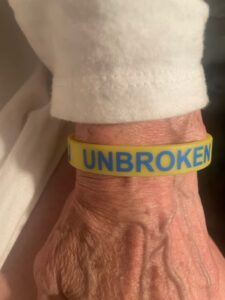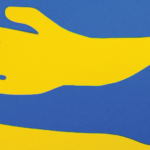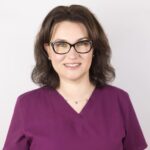Mix of Emotions
In Lviv, death’s reality is driven home by funerals, people visiting grave sites and moments of silence to honor the fallen heroes. Yet members of the visiting medical team also recount that Ukrainians show signs of resilience throughout the still vibrant and cosmopolitan city.
“We’re sitting in Lviv right now and it’s a really alive city,” says Dr. Pillinger, a place where people live free, work and attend school and university.
“It’s kind of extraordinary and yet it’s all in this background of what they understand is happening in the east [of Ukraine] and what’s happening to their own citizens,” says Dr. Pillinger.
People of Lviv have experienced great loss, notes Dr. Pillinger, including the young men who led their team around the city. One 25-year-old man told the group that six of his friends have died since fighting began early last year.
“Yet they remain positive,” says Dr. Pillinger. “We’re all wearing these rubber bracelets given to us by the mayor we met, and they say ‘Unbroken’” on them.

Bracelets presented to members of the medical mission by the mayor of Lviv.
Lviv’s mayor welcomed the group with a city tour that offered an insider’s survey of where help is still needed and a glimpse of hope for life without war. The experience impressed Yonatan Najman-Licht, a premed student from Brown University, Providence, R.I., and mission volunteer, by showing how Lviv’s mayor stays focused on the future.
“He’s really taking an opportunity to try to build this city up to survive the war and prepare for what life is going to be like after the war is over,” says Mr. Najman-Licht. “He started building this incredible hospital system and trauma system.”
In addition, a rehabilitation center was opened to help people who have lost limbs in the war learn to use prosthetics fabricated at a nearby site.
“They’re using these amazing facilities and therapists to help people get back on track and start walking,” says Mr. Najman-Licht. “We were able to get a tour and it’s really incredible how quickly they built that.”
One day Mr. Najman-Licht accompanied a visiting surgeon from Israel during patient consultations. A man in his 50s had been injured about a year ago when his house collapsed on top of him. “He had gone through the medical system in the east of the country and eventually came over here with an infection in his skull,” says Mr. Najman-Licht. “He also had an infection in his sinuses, hepatitis C and a lot of trauma damage at the front of his head.”


